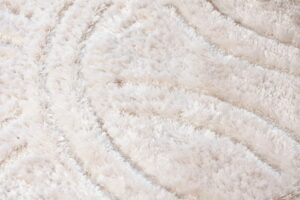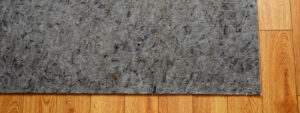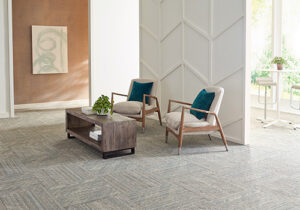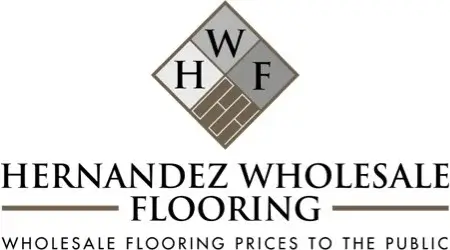The Ultimate Guide to Choosing the Right Carpet Padding
If you live in Commerce, CA, Los Angeles, or anywhere in the Southern California area, choosing high-quality flooring from a reputable retailer is vital to a comfortable, beautiful home. One important element of carpeting is the carpet padding that goes underneath it. Our carpet padding guide includes some helpful insights, tips, and information about choosing the best carpet padding for your home.

Why Carpet Padding Matters
Carpet padding is a key part of any high-quality carpet installation process. This flexible material protects the subfloor by reducing friction and absorbing the impact of foot traffic. It also adds a soft, cushion-like feel underfoot so that walking on your carpeting feels as comfortable and pleasant as possible. Carpet padding also provides extra insulation, which is especially helpful for soundproofing if you’re installing it on a second floor.
Types of Carpet Padding Explained
There are several types of carpet padding to consider when deciding which one is best for you and your needs. Each type of carpet padding has unique features and consists of specific materials.
Foam Padding
Although the term foam may seem all-encompassing, there are several different types of foam carpet padding available. Rebond foam is made of recycled scraps of high-density foam that offer a durable option, while memory foam is extremely soft and comfortable underfoot. Bonded urethane foam is another type of rebond foam known for its resilience and exceptional comfort. Prime foam is constructed of brand-new foam that is slightly less durable than rebond foam but feels much softer.
Fiber Padding
Fiber carpet padding is either made of natural or synthetic fiber. Natural fiber padding may be made of felt, jute, or animal hair and is considered the more environmentally friendly option between the two. Synthetic fiber padding is crafted from materials like nylon, polyester, or polypropylene. This option is firm and affordable, but it’s not the best carpet padding for homes unless you’ve chosen Berber carpet.
Rubber Padding
Rubber carpet padding is typically made in a flat, waffle, or slab style. Flat rubber padding is dense and durable, making it a good choice for resisting moisture and rigorous wear and tear. Waffle rubber padding is similar to flat rubber, but it has a unique waffle texture that gives it a touch more cushioning. Rubber slab padding is high-quality, moisture-resistant, and durable, and works well for both residential and commercial settings.
How to Choose the Right Thickness for Your Needs
To choose the right carpet padding thickness, consider the type of carpet you’re getting and the amount of foot traffic you’ll have in your home. For most homes, you’ll want to choose padding with either a thickness of 7/16 inches or 3/8 inches.
Consider these factors to help you choose the best carpet padding thickness for your needs:
- Carpet type: Low-pile carpet, like Berber, should use thinner padding at 3/8 inches or less to prevent stretching, while cut-pile carpets do best with padding that is around 7/16 inches thick.
- Traffic: Thinner padding is ideal for high-traffic areas, while thicker padding is the better choice for low-traffic areas where comfort is a priority.
- Feel: Thicker carpet padding provides a soft and plush cushioned feel, and thinner padding is more supportive for a solid, stable feel underfoot.

Best Carpet Padding Options for Pet Owners
If you have pets at home, you’re probably curious about the best carpet padding for pets. Adding a special moisture-resistant carpet pad, or moisture barrier padding, is the best way to protect your subfloor from your furry friend’s occasional accidents. This special padding consists of several layers designed to keep liquids from passing through your carpet to the floorboards underneath. Some new pet-friendly carpet padding also features breathable materials to help excess moisture escape and reduce odors.
Moisture and Spill Protection: What to Know
Even if you don’t have pets, moisture barrier carpet padding is beneficial for protecting your subfloor, preventing mold and mildew, and making cleanup easier. Here’s what you need to know about carpet padding and its protection against moisture or spills:
- Installation: Moisture barrier padding should always be installed with the barrier portion facing up toward your carpet.
- Waterproof: While this padding does protect against excess damage due to spills, it’s not fully waterproof like other flooring options, such as luxury vinyl plank.
- Maintenance: If you experience a spill, prompt spot cleaning is the best way to help the moisture barrier remain effective.
- Seam sealing: Proper seam sealing is a vital part of carpet installation and the best way to ensure that the moisture barrier provides maximum protection.
Padding vs. Underlayment: Is There a Difference?
When it comes to carpet padding vs. underlayment, is there a difference between the two? The term padding is almost exclusively used with carpeting, as it serves as a soft, cushiony layer between the carpet and subfloor. Underlayment is more commonly used to describe a thin layer of material used under hard surface flooring. Most underlayment is installed with laminate, hardwood, or vinyl and is much thinner than padding.
Installation Tips for Long-Lasting Comfort
Aside from choosing the right type of carpet padding, it’s also important to follow some carpet pad installation tips to maintain long-lasting comfort:
- Keep it clean: Make sure the subfloor is free of staples, nails, and other debris before installing the padding.
- Measure and cut: Carpet padding should have a few extra inches around the edges of your floor, and the seams should be at right angles to the carpet seams.
- Secure the padding: Your carpet padding should be secured to the subfloor using adhesive or staples and should not overlap carpet tack strips.
- Trim: Once the carpet is installed, any excess padding should be carefully trimmed away using a carpet knife.
- Maintenance: Avoid reusing old carpet padding, and avoid installing excess padding, which can cause your new carpet to become uneven and wear down faster.

Contact Hernandez Wholesale Flooring Today!
Hernandez Wholesale Flooring is your go-to destination for premium carpet, carpet padding, and expert advice in the Southern California area. We’ve proudly provided our customers with quality, service, dependability, professionalism, and competitive prices since 1970. If you’re interested in exploring our inventory of carpet products or you’re ready to start your flooring project, contact us today!
